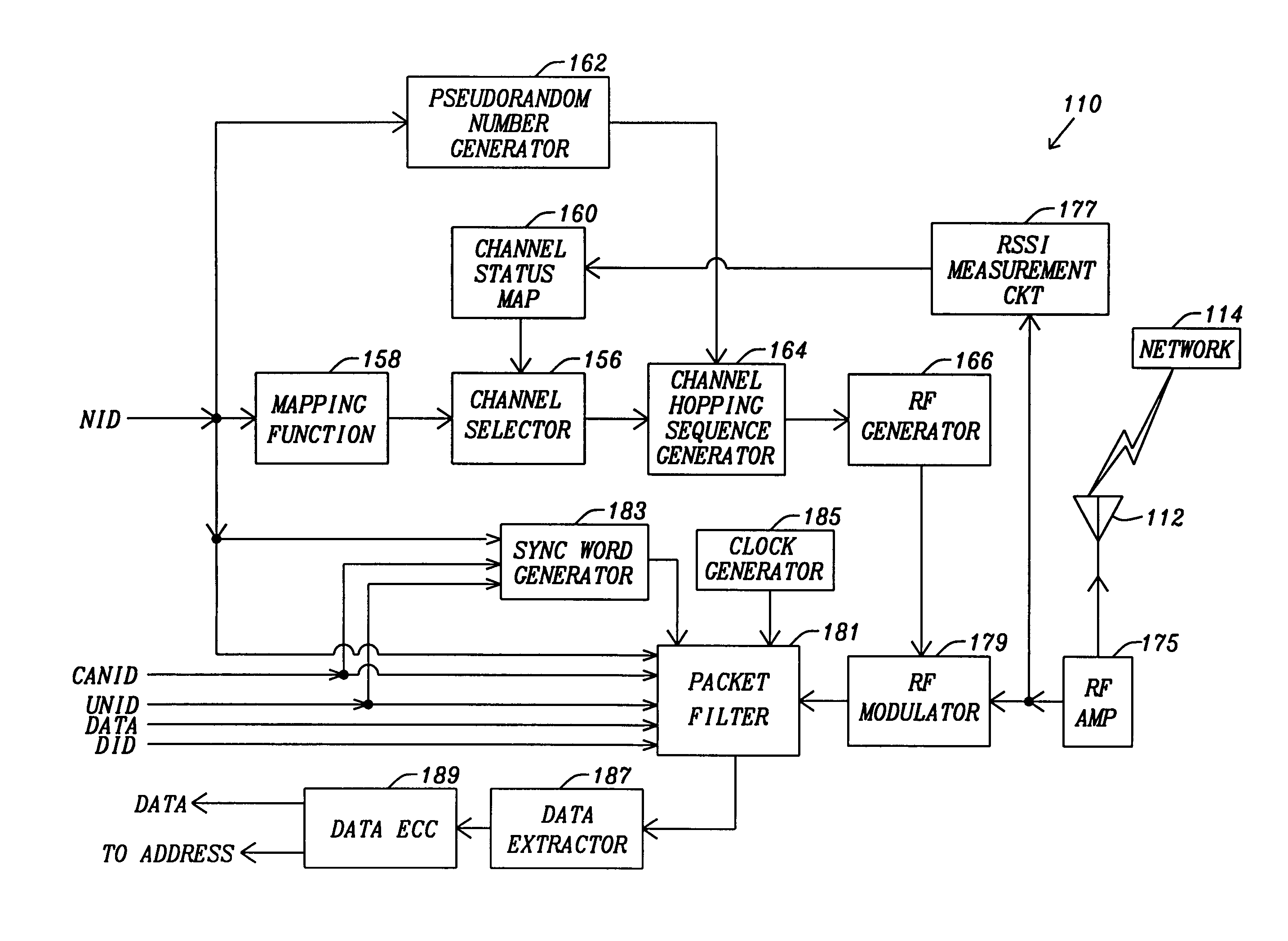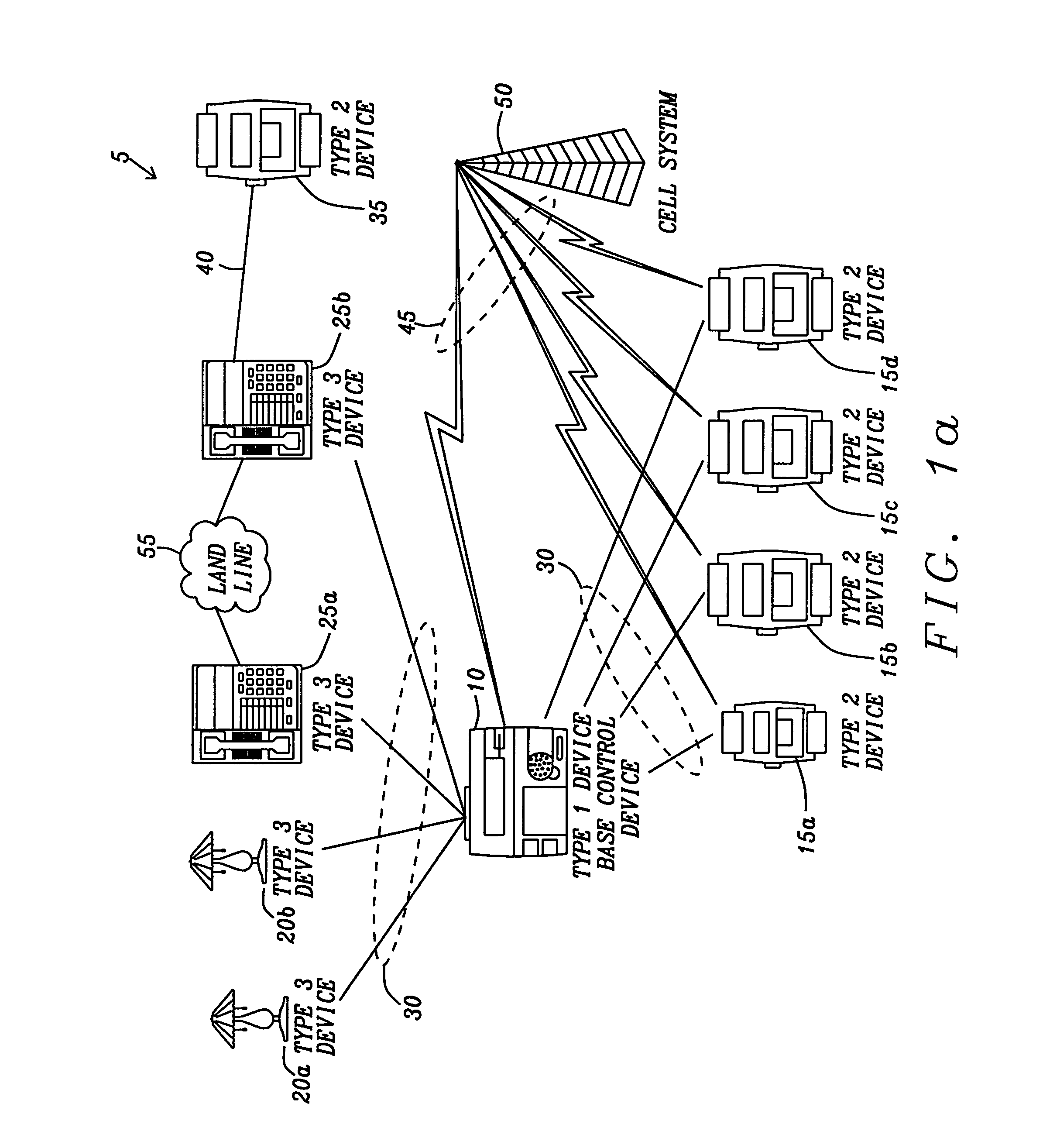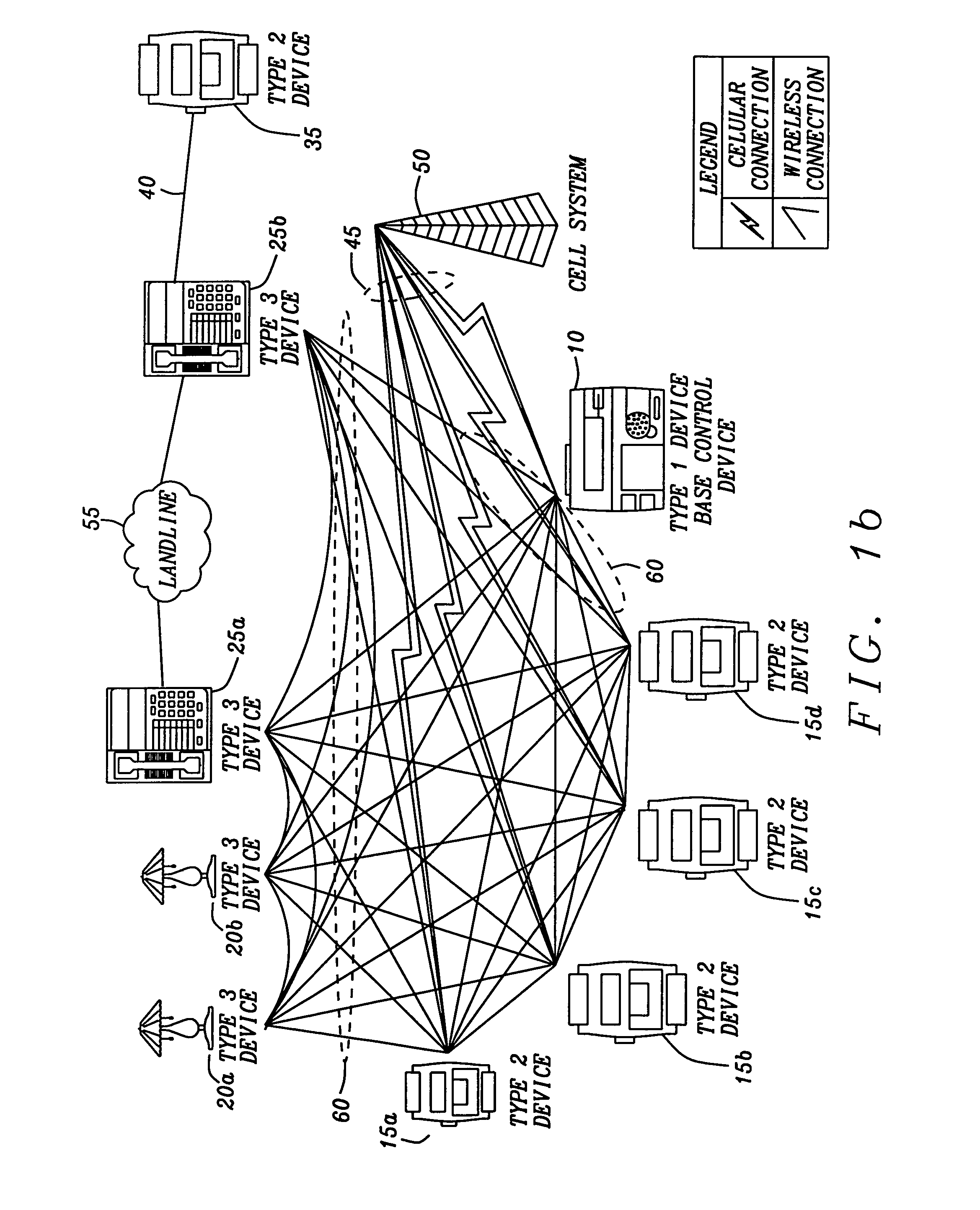Wireless system protocols for power-efficient implementation of star and mesh wireless networks with local and wide-area coverage
a wireless network and wireless system technology, applied in data switching networks, high-level techniques, instruments, etc., can solve the problems of low power consumption, low power consumption, and the inability to achieve low-power at the expense of very long acquisition time, so as to achieve efficient communication and efficiently generate adaptive frequency hopping patterns
- Summary
- Abstract
- Description
- Claims
- Application Information
AI Technical Summary
Benefits of technology
Problems solved by technology
Method used
Image
Examples
Embodiment Construction
[0053]For this invention, portable and / or wearable health management systems include personal emergency response systems, telehealth, and telemedicine systems. The personal emergency response systems allow users to send an alarm signal to a remote base station to alert caregivers to request assistance in an emergency. These normally consist of a mobile device wirelessly connected to a console, which communicates to caregivers via voice calls over standard analog telephone lines. The telehealth and telemedicine systems are for measurements and monitoring of users' health information, such as their vital signs. These are normally connected to remote caregivers using data, over the Internet or just using modems over analog telephone lines. The portable and / or wearable health management system such as watch or pendant as described in the 714 and 715 patent applications are health management communication devices 15a, 15b, 15c, and 15d as shown in FIGS. 1a and 1b. The console of the 714 ...
PUM
 Login to View More
Login to View More Abstract
Description
Claims
Application Information
 Login to View More
Login to View More - R&D
- Intellectual Property
- Life Sciences
- Materials
- Tech Scout
- Unparalleled Data Quality
- Higher Quality Content
- 60% Fewer Hallucinations
Browse by: Latest US Patents, China's latest patents, Technical Efficacy Thesaurus, Application Domain, Technology Topic, Popular Technical Reports.
© 2025 PatSnap. All rights reserved.Legal|Privacy policy|Modern Slavery Act Transparency Statement|Sitemap|About US| Contact US: help@patsnap.com



